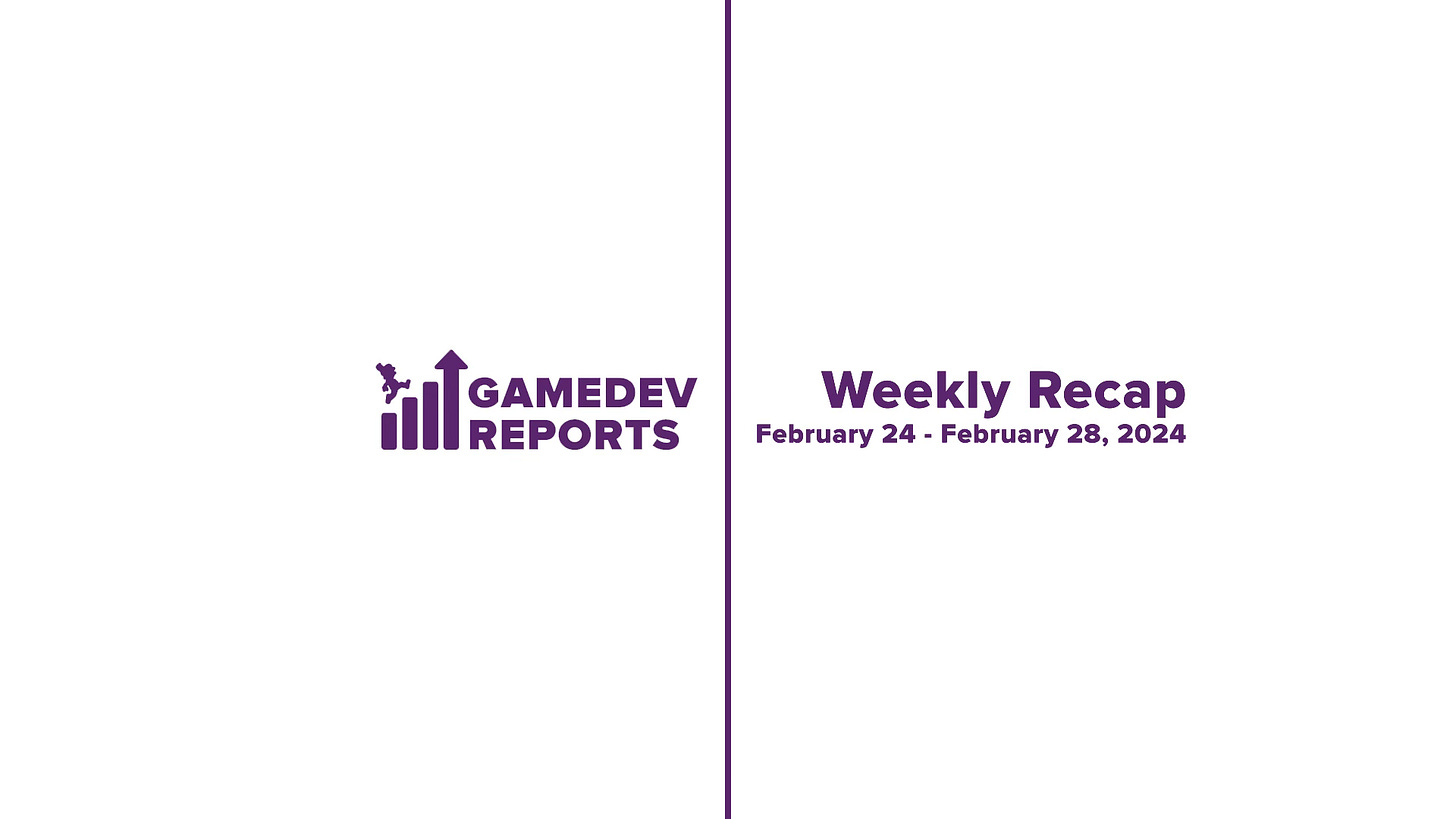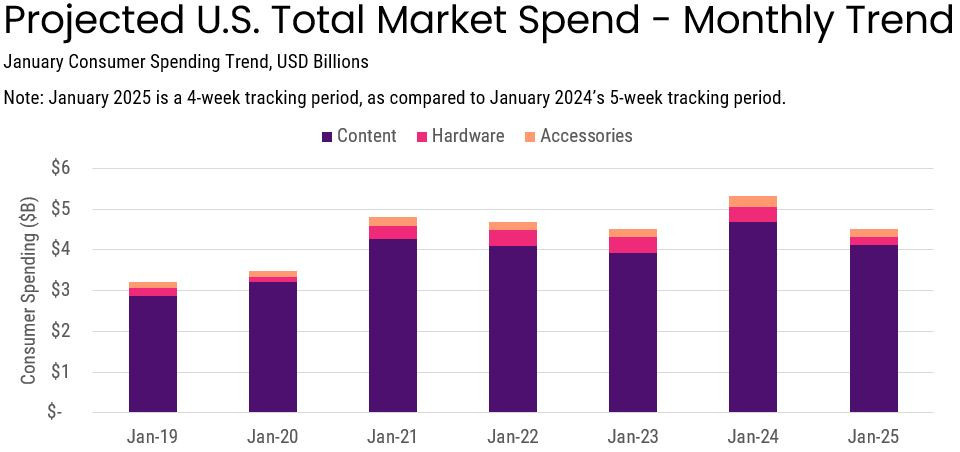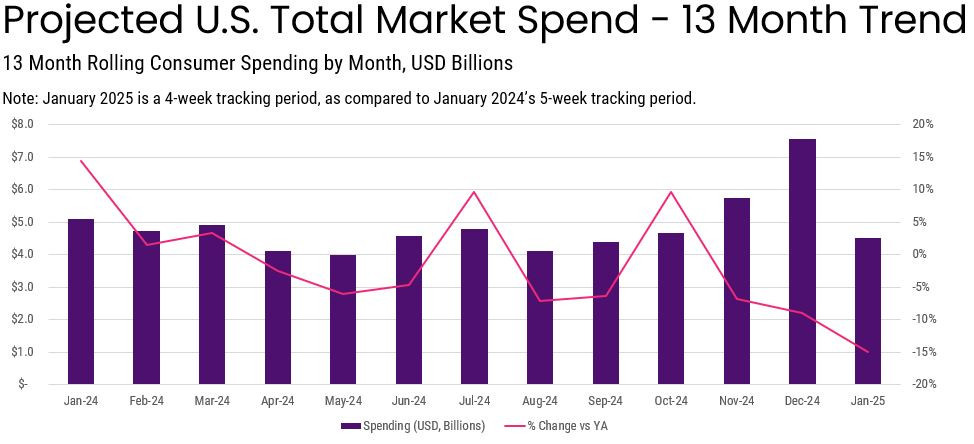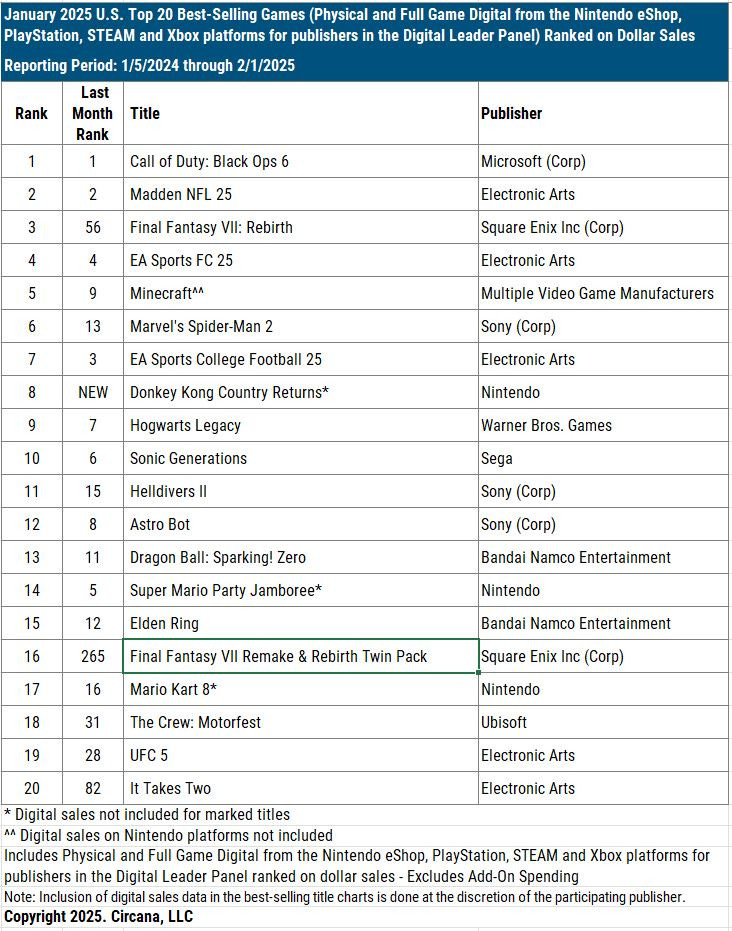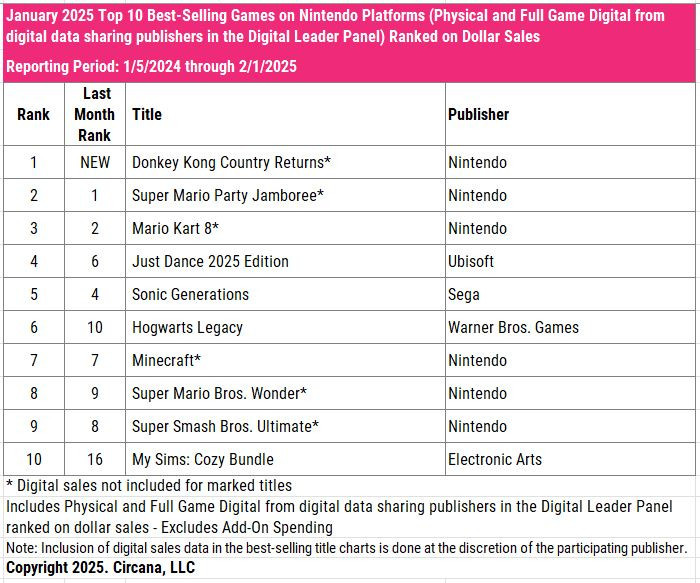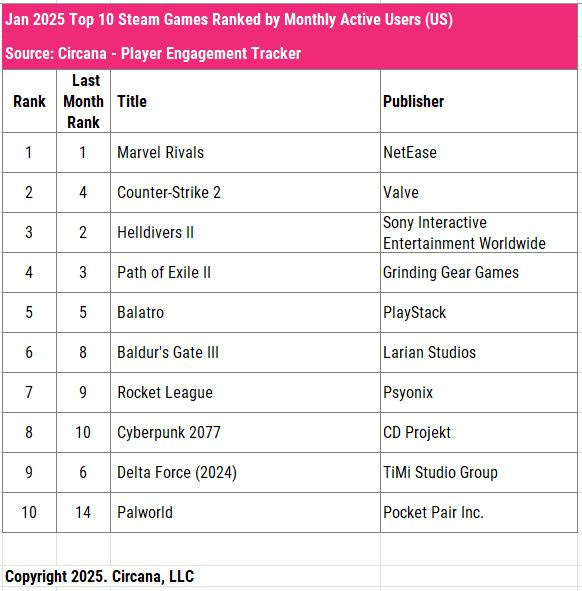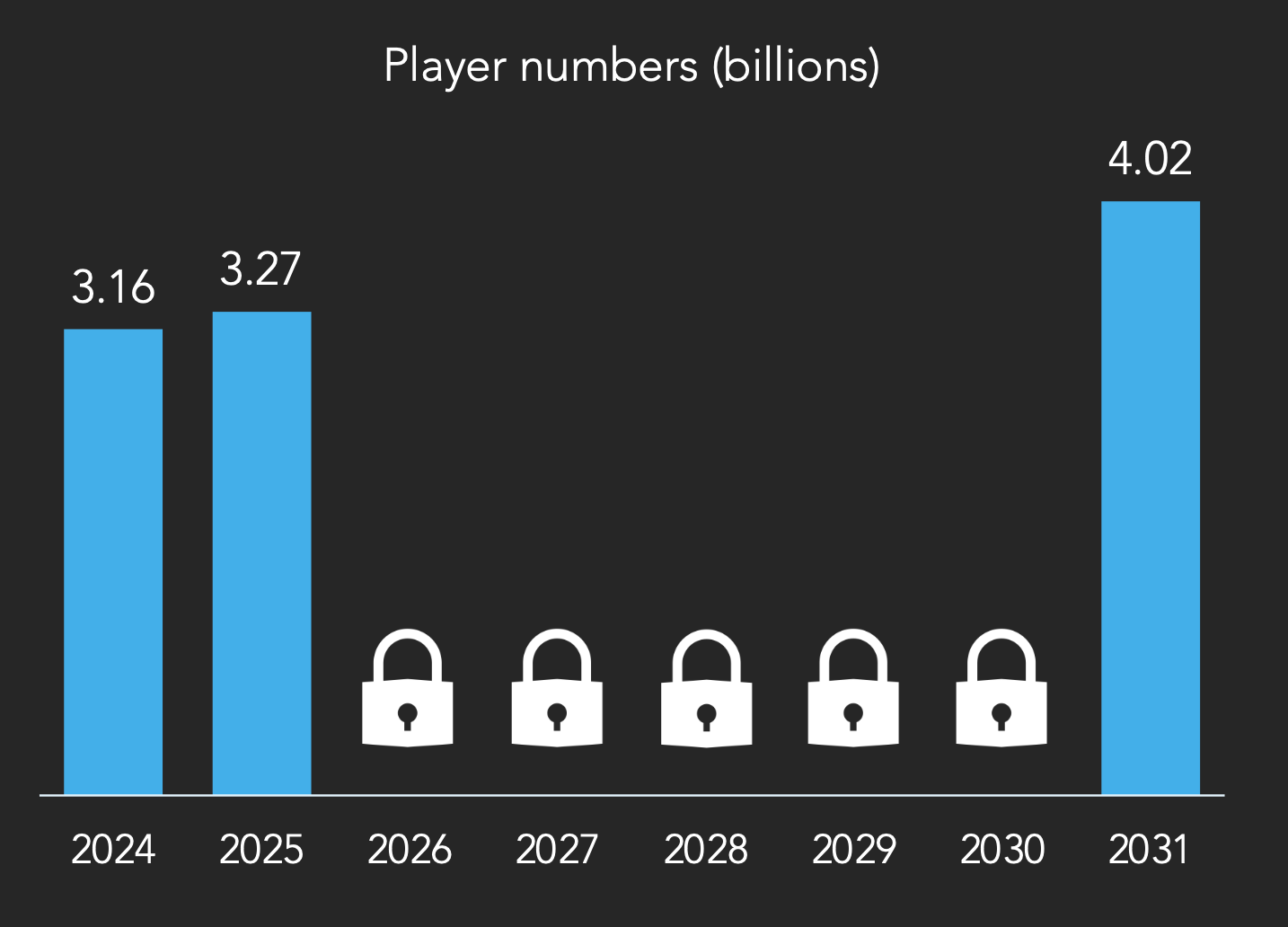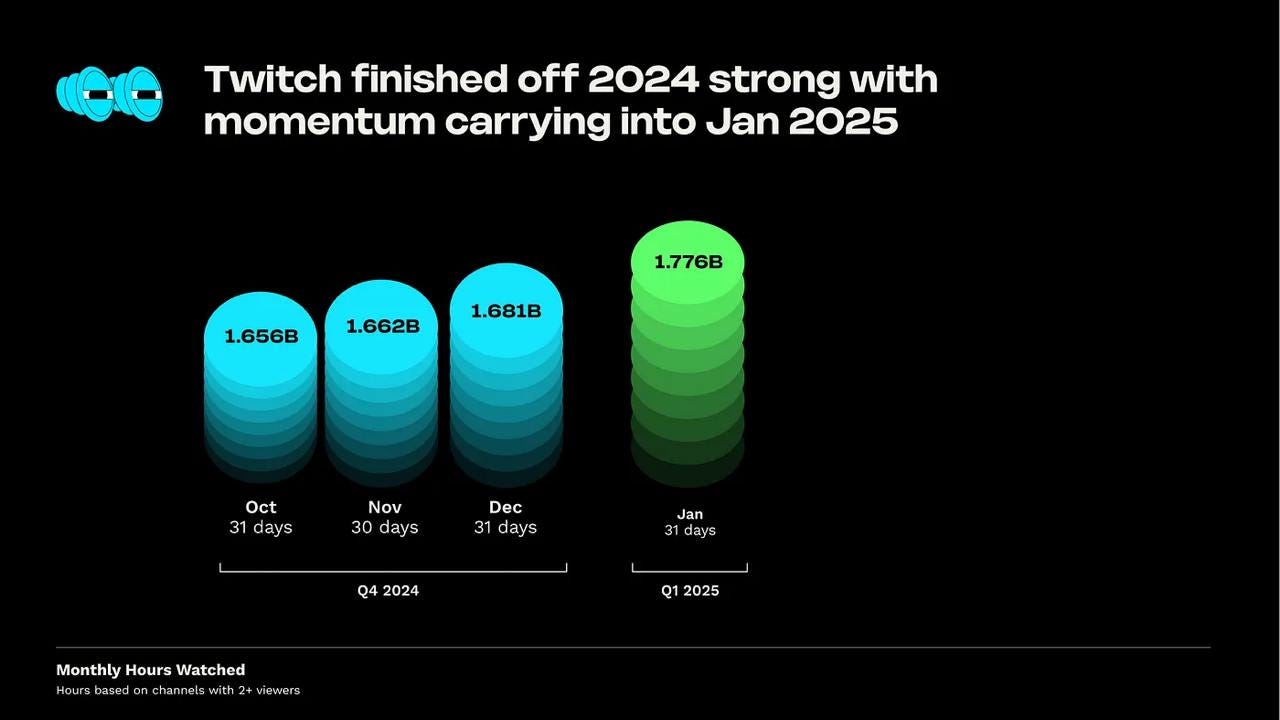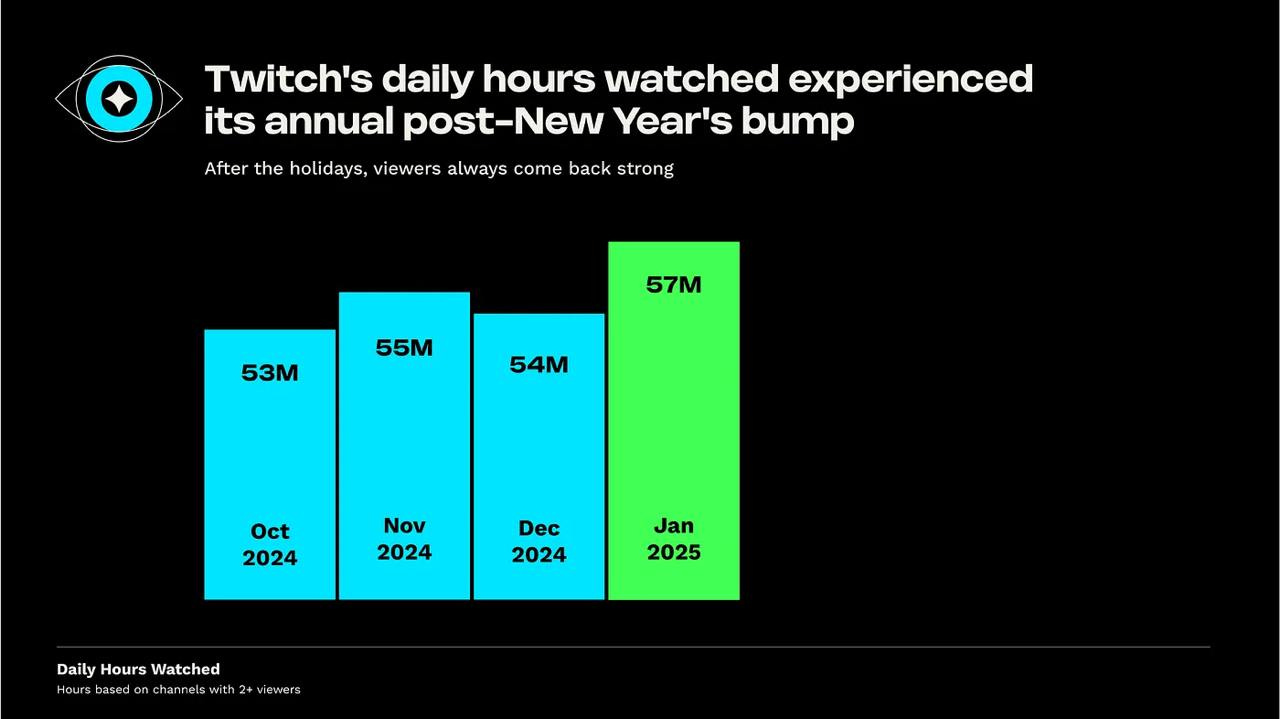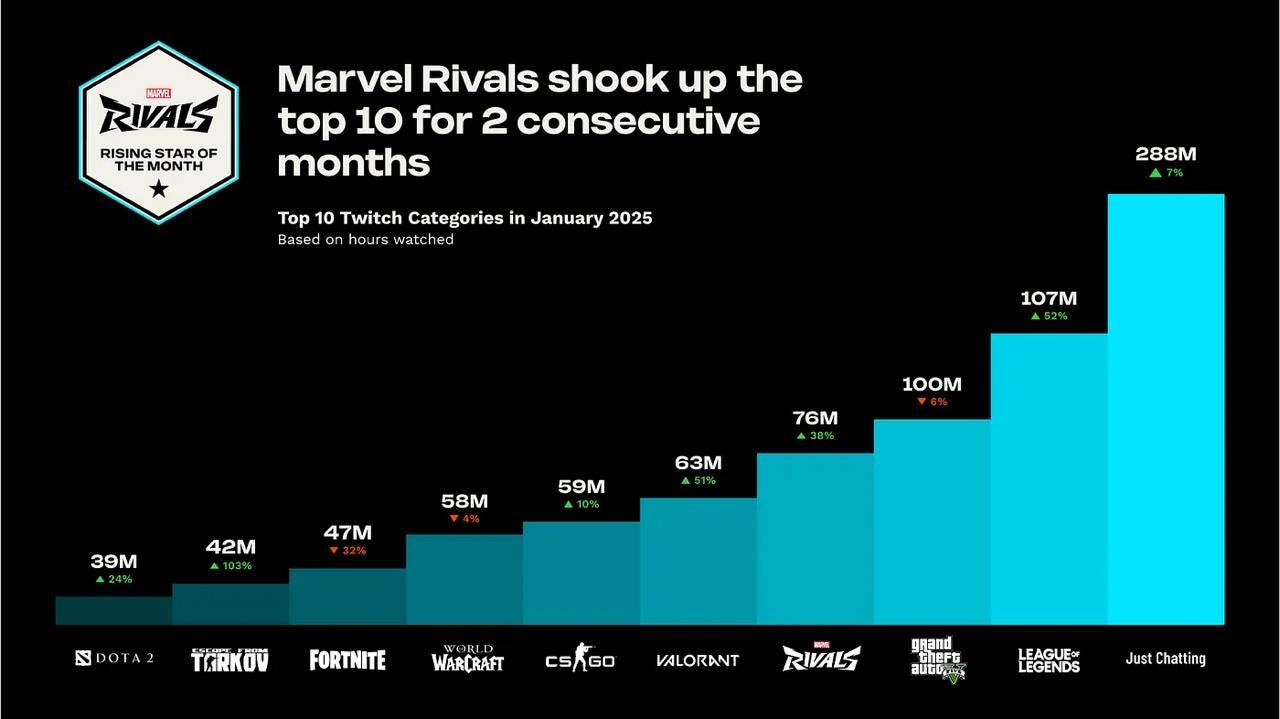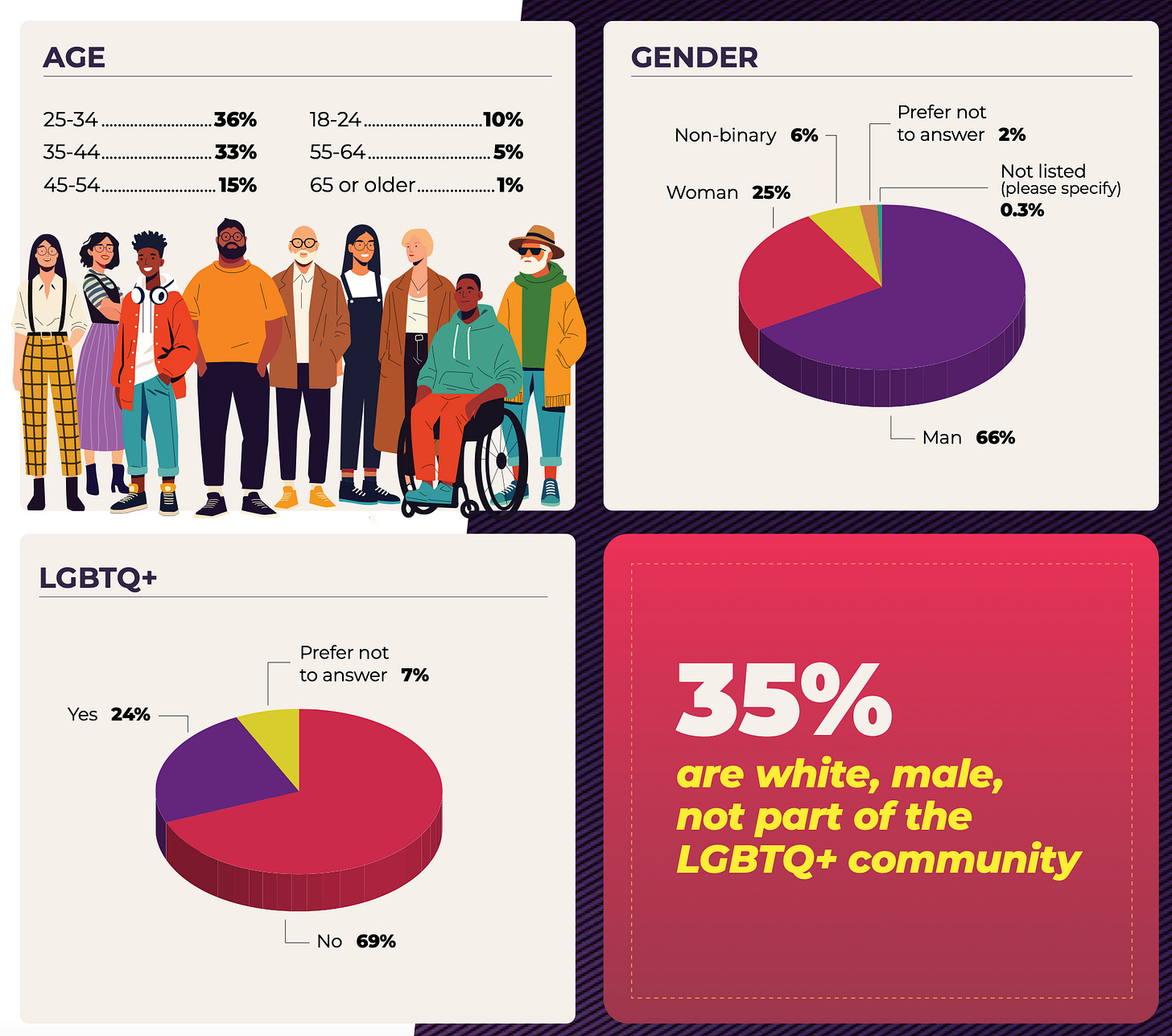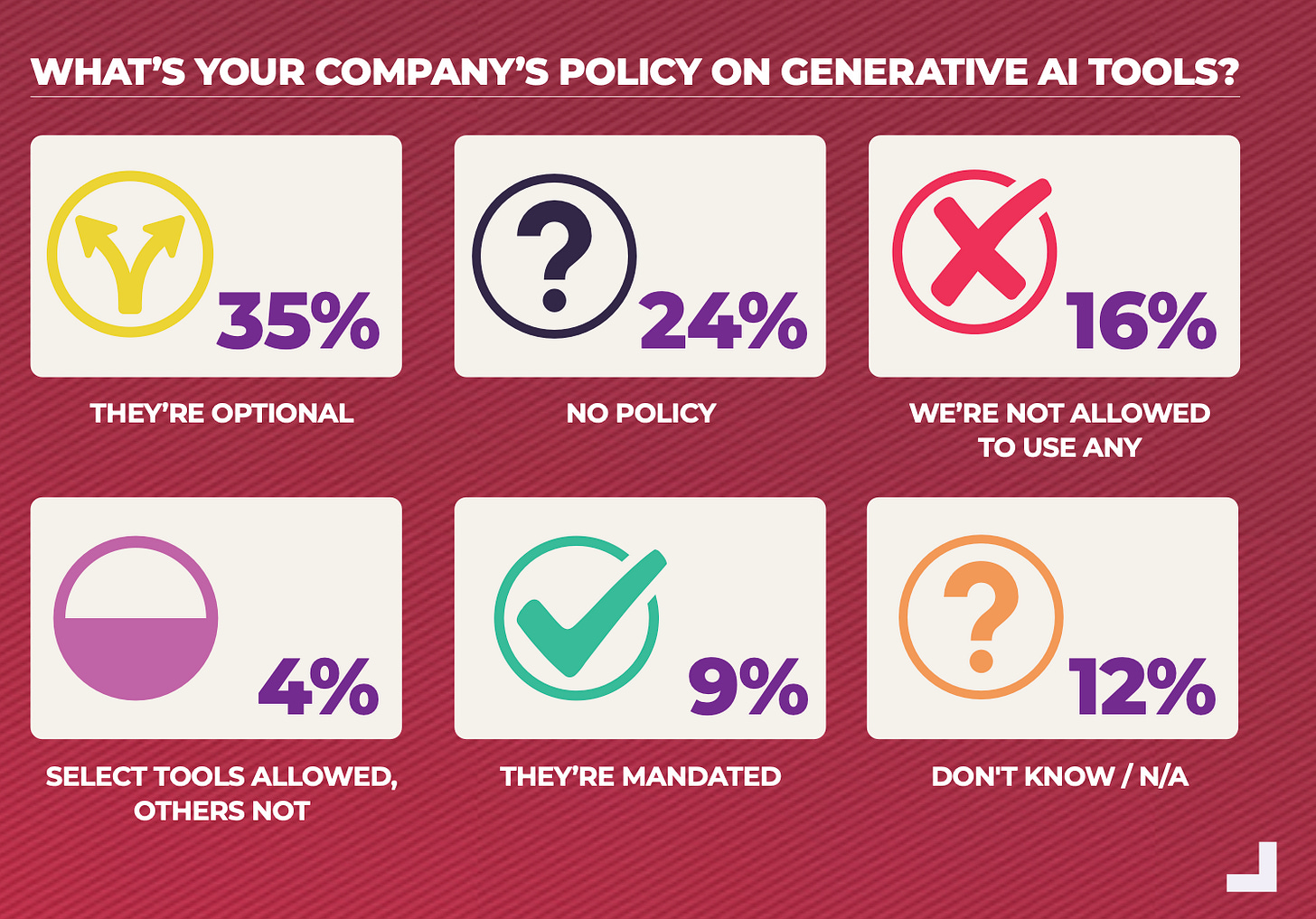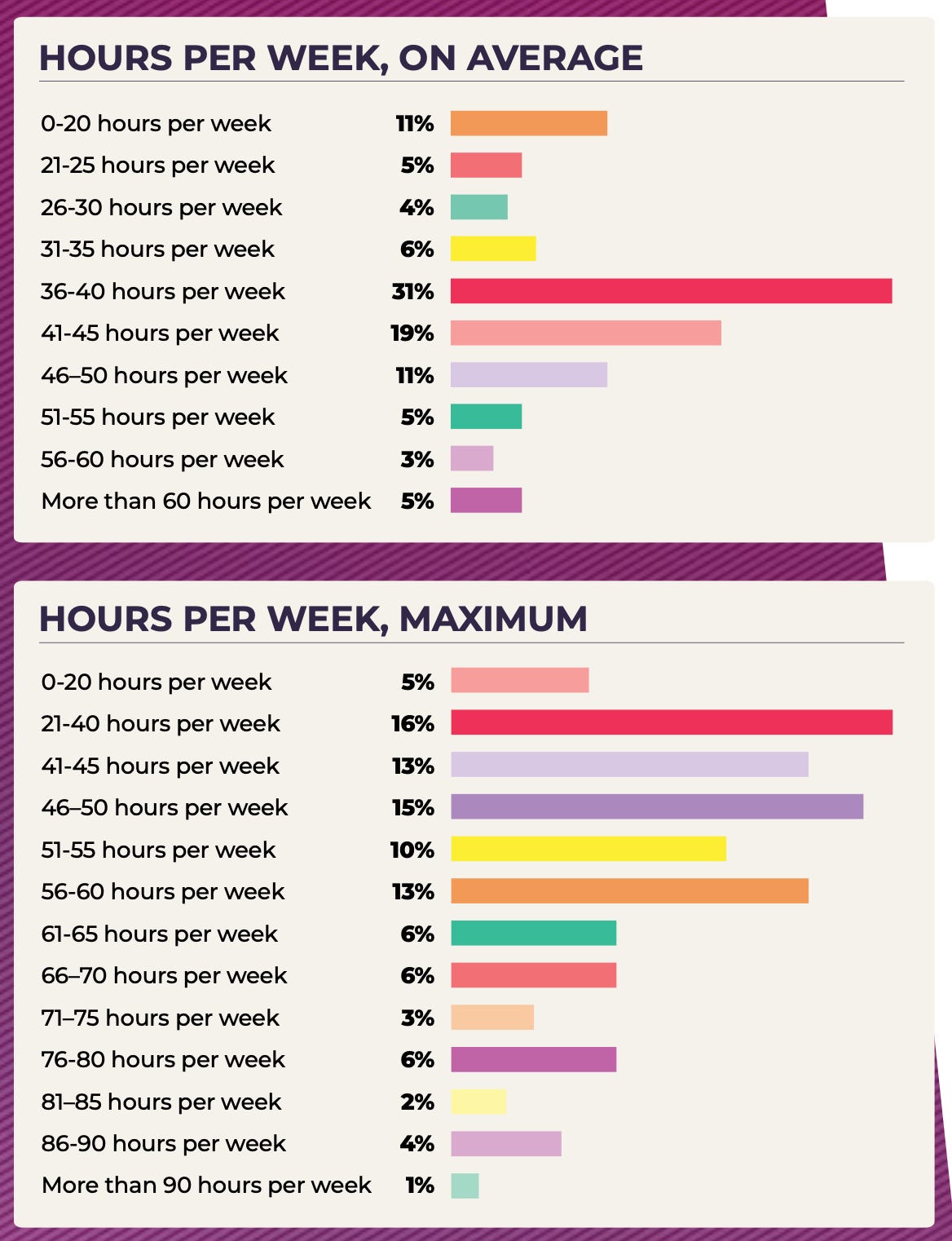Weekly Gaming Reports Recap: February 24 - February 28 (2025)
The US market data (by Circana), the future of the gaming market (by MiDiA Research), and the reality we're living in (GDC'25).
Reports of the week:
Circana: The US gaming market in January'25
MIDiA Research: The gaming market will never return to double-digit growth rates (2025-2031 forecast)
StreamElements & Rainmaker.gg: Streaming Market in January'25
GDC: The State of the Game Industry in 2025
Circana: The US gaming market in January'25
Overall market condition
The market in January 2025 declined by 15% compared to January 2024 - to $4.513 billion.
Game sales fell by 12% - to $4.115 billion; gaming hardware sales dropped by 45% to $205 million; and accessory sales decreased by 28% to $194 million.
❗️BUT! The figures are for a 4-week period, while January 2024 accounted for 5 weeks. So it's not as bad as it seems.
Gaming hardware sales figures are the lowest since January 2020. PS5 sales fell by 38% YoY, Xbox Series S|X sales - by 50%, Nintendo Switch - by 53%. “It’s 4 weeks”, - you can say. But Matt draws attention to 2022 and 2023 (also 4-week periods). The console market is cyclical.
PlayStation 5 - the best-selling console of the month both in terms of revenue and number of systems. Xbox Series S|X is second in revenue, while Nintendo Switch is second in units sold.
PlayStation 5 Pro sales are lagging behind PlayStation 4 Pro sales dynamics.
49% of all PS5s sold in January in the US were digital. 88% of Xbox Series S|X sold had no disc drive.
Consider subscribing to the GameDev Reports Premium tier to support the newsletter. Get access to the list of curated articles & archive of Gaming Reports that I’ve been collecting since 2020.
PlayStation Portal continues to be the best accessory in the US by dollar sales. In terms of numbers sold, DualSense Midnight Black leads.
Growing segments include non-mobile subscriptions (13% growth) and mobile game revenue (+2%). However, console content sales fell by 35% YoY (again, we're comparing 4 weeks to 5 weeks of January 2024).
Game sales
Call of Duty: Black Ops 6 - the best-selling game of the month. It's the sales leader on PlayStation, while on Xbox the game ranks 2nd. For MAU, the situation is reversed.
Final Fantasy VII: Rebirth showed good results on Steam. The game was released on January 23 on PC.
Donkey Kong Country Returns is the only new release of the month. The game climbed to 8th place (excluding digital copies).
Top revenue generators among mobile projects remain the same - MONOPOLY GO!, Royal Match, and ROBLOX.
Platform rankings


The PlayStation sales chart is stable. Xbox is a bit more interesting - for example, The Elder Scrolls: Online made to the list.
Looking at MAU in the US on consoles, Marvel Rivals' success is noteworthy - the game continues to successfully retain an active audience.
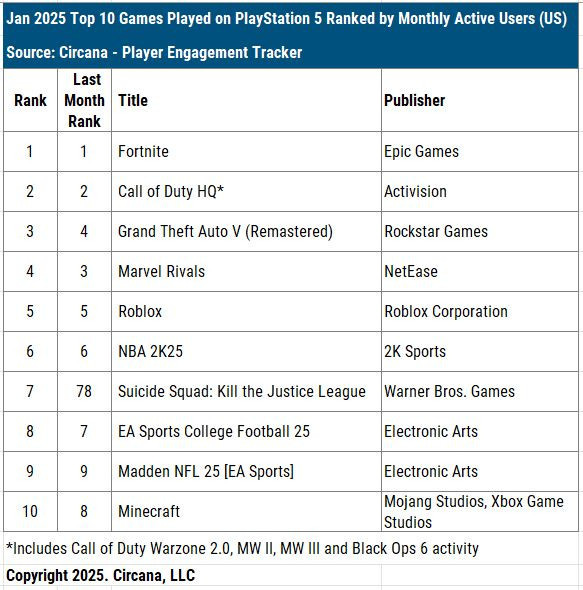
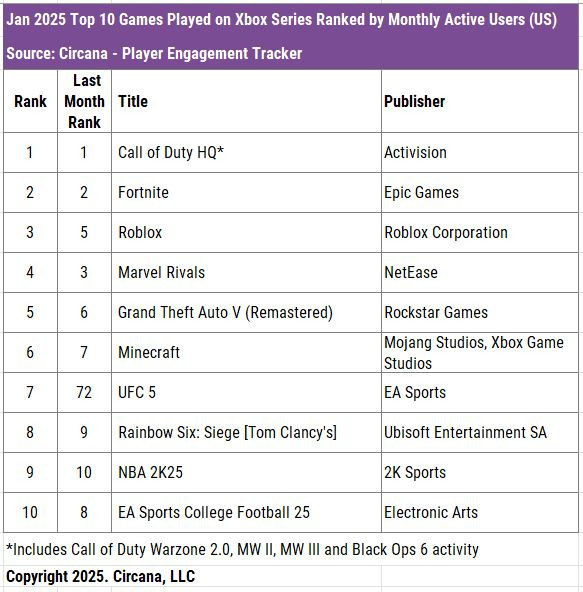
In January, the top 10 sales for Nintendo Switch unusually include many other publishers. Games from Ubisoft, SEGA, Warner Bros. Games, and EA made the list.
Marvel Rivals - Steam's MAU leader in January 2024 in the US. It's surprising how different the platform audience's tastes are from console players.
MIDiA Research: The gaming market will never return to double-digit growth rates (2025-2031 forecast)
The company's market assessment includes sales of games, gaming hardware, and in-game items. Game revenue is calculated considering commissions, taxes, and retail markups. Sales of phones, tablets, TVs, and PCs are not included. Accessory sales are also not considered. Foreign currency was converted to dollars at the average exchange rate for the reporting period. Data up to Q4'24 is historical, after that - forecast.
Overall market condition
The gaming market will reach $236.9 billion by 2031. In 2025 it will be 4.6% more than in 2024. However, adjusted for global inflation of 4.2%, the gaming market effectively remains on a plateau.
Game revenue in 2025 will reach $203.2 billion. A big bet is placed on Grand Theft Auto 6, the launch lineup of Nintendo Switch 2, and successful launches of projects like Monster Hunter Wilds and Assassin's Creed Shadows.
The release of Nintendo Switch 2 in 2025 should return the gaming hardware market to growth after a 19.9% decline in 2024. Growth of 8.4% is expected.
The gaming subscription segment grew by 16% to $11.8 billion in 2024, largely due to the appearance of Call of Duty in Game Pass. Growth is expected to continue in 2025, with the segment reaching $13.1 billion.
The company estimated the gaming advertising market at $23 billion in 2025.
❗️My subjective opinion is that the gaming advertising market is larger than estimated by MiDiA.
In 2025, 68% of all game revenue will come from in-game purchases.
2024 Benchmarks
ARPPU of a console user - $81.68.
ARPPU of a premium PC game buyer - $55.47.
Consider subscribing to the GameDev Reports Premium tier to support the newsletter. Get access to the list of curated articles & archive of Gaming Reports that I’ve been collecting since 2020.
The total number of players worldwide is estimated at 3.16 billion. Of these, 2.8 billion are mobile device players. In 2025, the number of players will grow to 3.27 billion.
The Asia-Pacific region accounted for 53% of the entire gaming audience in 2024.
Company analysts note that 45% of the console audience makes in-game purchases. On PC, it's 36%, and on mobile devices - 31%.
Forecast for 2031
The market volume is expected to reach $280.1 billion by 2031.
Game revenue by 2031 will be $237 billion.
Revenue from the gaming console segment will be $24.6 billion by 2031.
MIDiA Research analysts predict that gaming subscriptions will account for $18.5 billion by 2031. They note that most of the growth will be due to price increases rather than audience growth.
By 2031, the share of in-game purchases in the overall structure of game revenue will be 67%.
By 2031, the gaming advertising market will reach $27.7 billion, according to the company's estimates.
By 2031, the number of players worldwide will reach 4.02 billion.
StreamElements & Rainmaker.gg: Streaming Market in January'25
Twitch accumulated 1.776 billion hours of viewership in January 2025. The platform continued its strong performance from Q4 2024.
The daily viewership in January reached 57 million hours - higher than any month in Q4'24. However, analysts note that this is a normal situation for Twitch - January is traditionally a good month for the platform.
Marvel Rivals is performing great in the charts. The game has been in the top 10 for the second consecutive month, ranking third in January (76 million hours watched). League of Legends is in first place (107 million hours), while Grand Theft Auto V is in second place (100 million hours).
GDC: The State of the Game Industry in 2025
Survey participants
The majority of developers are between 25 and 34 years old (36%) and between 35 and 44 years old (33%).
69% do not identify as part of the LGBTQ+ community. 24% identify. 7% preferred not to answer the question.
66% are men, 25% are women, 6% are non-binary persons. The rest preferred not to answer.
Most survey participants are from the USA (58%), UK (7%), and Canada (6%). The report authors note that the survey may only representatively show what's happening in the Western game industry.
The largest ethnic groups are White / Caucasian (59%), Asian (16%), and Latino/Hispanic (10%).
Most respondents are game designers (35%), programmers (34%), and production or team managers (31%).
Most respondents have been in the industry for 3-5 years (24%), 6-10 years (22%), and over 15 years (22%). The study authors note that 60% of developers have been in the industry for less than 10 years - an increase compared to previous years.
Interestingly, the audience distribution by studio size shows that 21% of respondents work solo, while 18% work in studios with over 500 people. The number of people working in AAA companies has decreased.
Layoffs in the Industry
43% of respondents said there were no layoffs in their companies. In last year's survey, this figure was 53%.
4% said their company closed. 11% were laid off. 18% said layoffs occurred in other departments or teams of the company. And 29% noted that layoffs affected their direct colleagues.
Only 30% of respondents are not worried about layoffs. However, it's important to note that a large number of people chose to skip this question as they had already been affected by layoffs.
Narrative professions (19%), managerial positions (16%), and artists (16%) were most affected by cuts. Business and finance specialists were least affected.
Restructuring (22%), revenue decline (18%), and market changes (15%) are the main reasons given for employee layoffs. 19% of those who lost their jobs said they were not informed of the reasons for the decision.
Attitude towards generative AI
52% of respondents note that they use AI tools. 27% say they don't use them and don't plan to. Surprisingly, older employees use AI more often than their younger colleagues.
AI is most often used in business processes and finance (51%), team management (41%), and communications, marketing, and PR (39%).
Consider subscribing to the GameDev Reports Premium tier to support the newsletter. Get access to the list of curated articles & archive of Gaming Reports that I’ve been collecting since 2020.
51% of companies in the market have some policy on working with AI. In AAA studios, this figure is 78%.
The number of employees who noted that they need to use AI for work has doubled over the past year. But it's still only 4%.
Opinion on generative AI has significantly worsened over the past year. 13% believe AI will bring positive changes (vs. 21% last year). 30% are confident that changes due to AI will be negative (vs. 18% last year).
❗️It seems to me that the negativity about AI is caused not so much by the technology itself, but by the time in which the technology appeared. People associate industry problems with AI, although there are many more reasons for layoffs.
Engines and Platforms
80% of developers make games for PC - the most popular platform recently. Last year, 66% of developers said they make games for PC. The popularity of UGC platforms remains low (only 3% work in this direction).
For the first time since 2020, the number of developers making games for mobile devices has increased. 28-29% of respondents work on games for iOS and Android (vs. 23% and 24% last year). Most of these developers are from Brazil, the Middle East, and Asia.
Web platform game development is a clear trend. 16% of developers are preparing their projects for the web (vs. 9% last year and 11% the year before). This is the highest value since 2015.
Meta Quest remains the main VR/AR device on the market, as well as the most interesting for developers.
Unity (32% of respondents) and Unreal Engine (32% of respondents) are the main engines in the industry. Another 13% work on their own proprietary engines. Interestingly, despite a lot of negativity associated with Unity Runtime Fee, it looks like developers haven't left the . The share of developers using the engine has hardly changed from last year.
Game Business
13% of respondents would like to make GAAS projects. Another 16% are already making them. But 42% don't want to get into this part of the business. Among AAA developers, the share of those working on service projects is higher - 33%.
62% believe that stable CCU is the main metric of a successful service game. 40% named DAU, 32% - the percentage of paying users.
13% of developers are already working on translating their IP into movies or series. 5% of respondents said they were approached with such an offer. Another 14% discussed this possibility internally. At the same time, a third of major AAA developers are working on transferring their IP to television format.
Publishing and Financing
Self-funding (56%), publisher funding or project financing (28%), grants and government support, venture investments, co-development (all at 15%) are the most popular financing formats among respondents. Interestingly, among AA developers, 40% are making projects with their own funds, while among AAA developers, only 29% do so.
In terms of subjective perception of success, venture investments received the most negative reaction as a financing method. 32% of respondents noted that their venture story didn't work out at all. Self-funding and co-development generate the most positive reactions.
Social Initiatives
Overall, the industry believes that they and their companies are succeeding in game accessibility, DEI initiatives, and sustainability.
16% of respondents noted that they faced natural disasters over the past year. This figure has seriously increased over the past couple of decades.
Game developers have started working more for the first time since 2019. The share of those who work 40 hours or less per week decreased from 64% last year to 57% this year. There are more of those who work more than 51 hours per week (the share increased from 8% to 13%).
People have different motivations for overtime. 67% do it on their own initiative (there may be a whole complex of factors why this happens). 23% don't consider it overtime. 14% fear consequences (probably layoffs). 12% noted that management pressures them.
Overall, the industry expresses support for the emergence of unions. Representatives of narrative professions and QA specialists vote the most for them. These are professions that are often at risk. Among young people, there are more who want to have a union.



